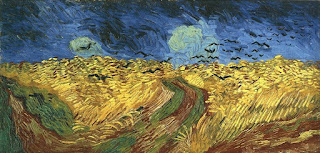Berger claims that before reproduction of art "the uniqueness of every painting was once part of the uniqueness of the place where it resided" because how "it could never be seen in two places at the same time" (19). So Berger believes that reproducing these images via cameras "destroys the uniqueness of its image" (19). I agree that having to go to a specific place to experience a piece of art adds to the overall experience, but I don't think reproductions of that art destroy all of the unique qualities of the piece. In addition, if I didn't have access to reproductions of artwork then I would never have gotten to study these pieces of art unless I could afford to travel all over the world to see them. Personally by studying these pieces and copying them, I have grown to appreciate them in ways than I would not have if I just walked up to the piece for the first time. For example, while trying to copy any of da Vinci's portraits you begin to comprehend just how difficult and how much skill it takes to create a work of art like that. Berger does note that people can argue that it is agreed that "reproductions more or less distort" so that in a way the original is still unique in some way (20).
Another section of the reading that stood out to me was the section about with Vincent van Gogh's Wheatfield with Crows. As I read the line "this is a landscape of a cornfield with birds flying out of it" I appreciated the composition of the piece and the signature brushstrokes of Van Gogh, but it was not until I read the following page where it states "this is the lost picture that Van Gogh painted before he killed himself" when suddenly the image no longer was just crows in a wheat field (27, 28). Berger perfectly sums it up by saying "the image now illustrates the sentence" (28). Berger brings up interesting points about observing images and artwork that I had never thought about until I read this work.
 |
| Wheatfield with Crows by Vincent Van Gogh |
No comments:
Post a Comment